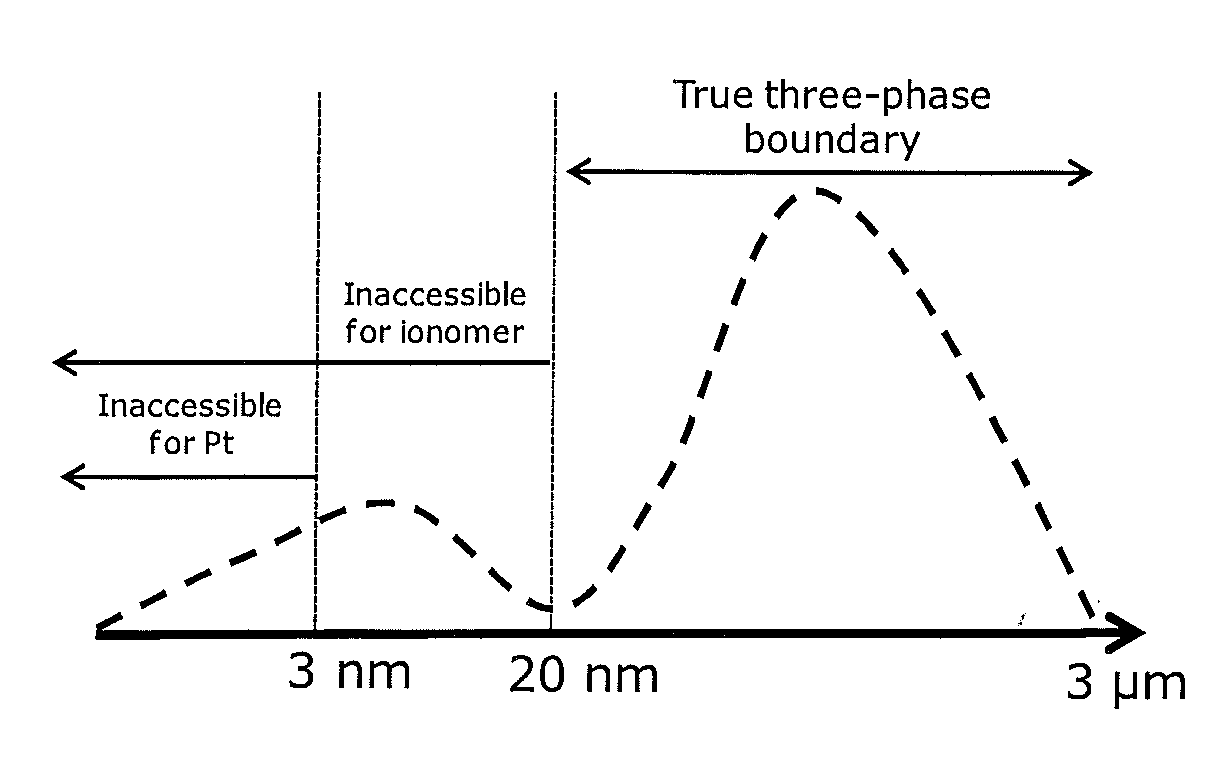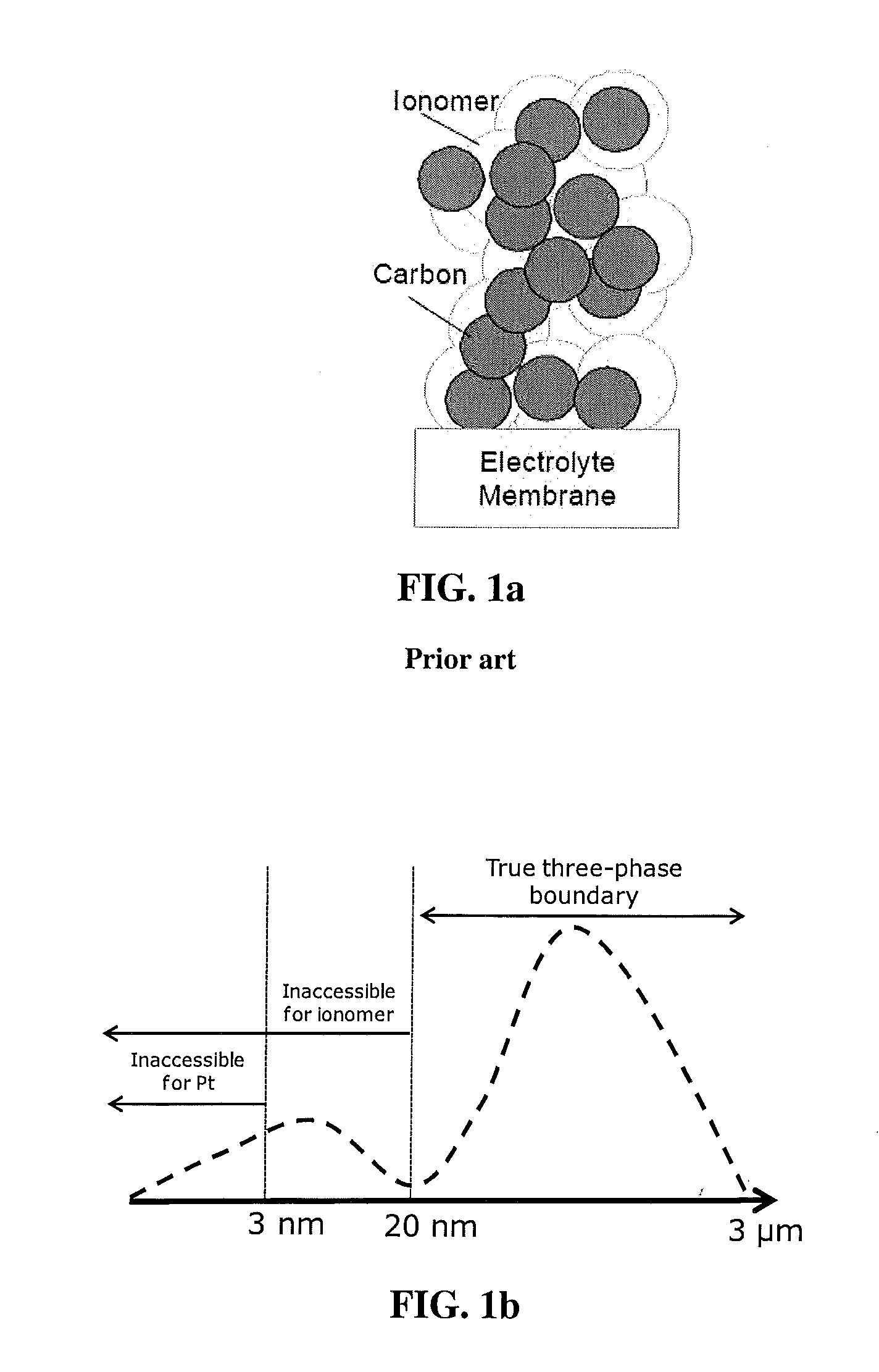Conductive mesh supported electrode for fuel cell
a fuel cell and conductive mesh technology, applied in the direction of cell components, electrochemical generators, coatings, etc., can solve the problems of increasing the cost of noble metal catalyst materials, increasing the cost of catalyst materials, and affecting the efficiency of catalysts, so as to facilitate reactant and product flow, and improve the utilization of catalytically active materials.
- Summary
- Abstract
- Description
- Claims
- Application Information
AI Technical Summary
Benefits of technology
Problems solved by technology
Method used
Image
Examples
examples
[0050]The potential benefits of using engineered electrodes of the invention as cathodes in otherwise conventional fuel cells were obtained via modeling. In this modeling, conventional solid polymer fuel cell construction was assumed with the exception of certain cathode constructions of the invention. The cathode side of each cell comprised a cathode layer (CL) electrode, a cathode gas diffusion layer (GDL), and a microporous layer (MPL) between these two. The modeling itself was based on the Fuel Cell Simulation Toolbox (FCST), which is a simulation package for solid polymer electrolyte fuel cells. FCST is an open-source code and has an application that allows a user to simulate a cathode electrode. The physical models implemented in FCST are well validated with experimental data from the literature. A detailed description of the model theory, implementation and validation can be found for instance in M. Secanell, Computational modeling and optimization of proton exchange membrane...
PUM
| Property | Measurement | Unit |
|---|---|---|
| pore size | aaaaa | aaaaa |
| diameter | aaaaa | aaaaa |
| thick | aaaaa | aaaaa |
Abstract
Description
Claims
Application Information
 Login to View More
Login to View More - R&D
- Intellectual Property
- Life Sciences
- Materials
- Tech Scout
- Unparalleled Data Quality
- Higher Quality Content
- 60% Fewer Hallucinations
Browse by: Latest US Patents, China's latest patents, Technical Efficacy Thesaurus, Application Domain, Technology Topic, Popular Technical Reports.
© 2025 PatSnap. All rights reserved.Legal|Privacy policy|Modern Slavery Act Transparency Statement|Sitemap|About US| Contact US: help@patsnap.com



